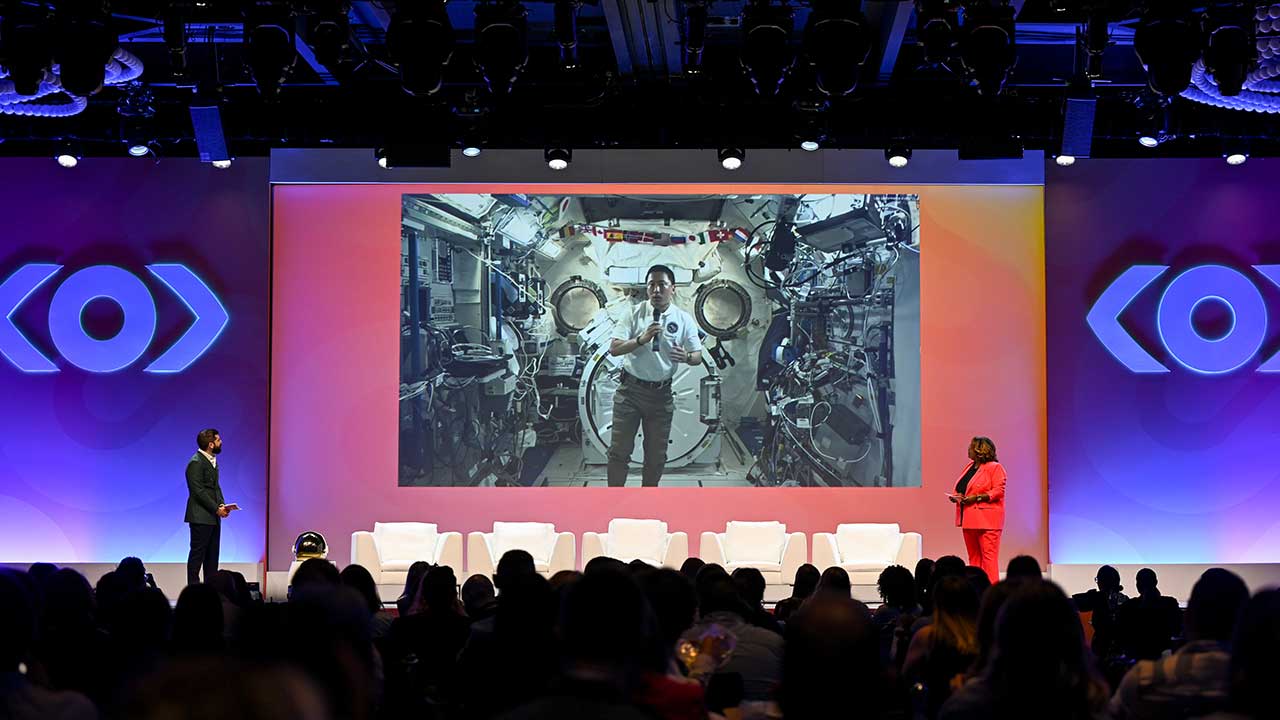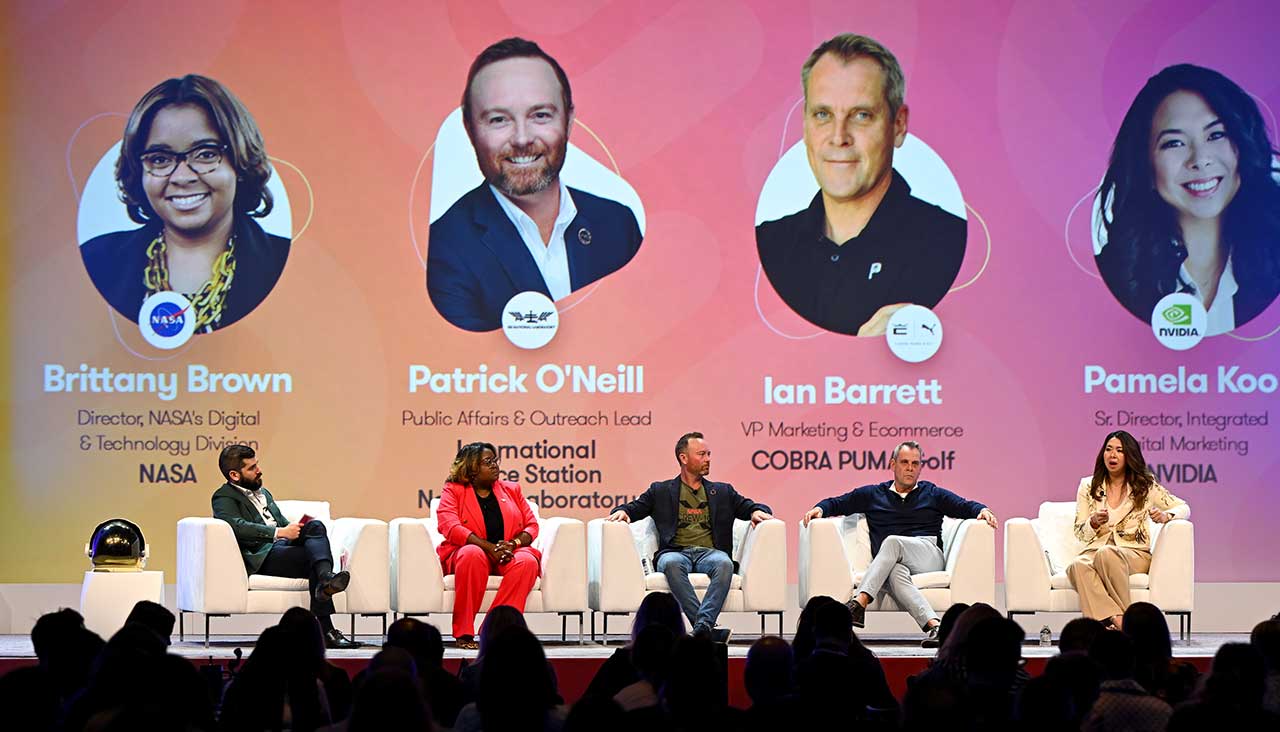Orbiting Back: A Full-Circle View of the Evolving Space Research Landscape

NASA astronaut Jonny Kim joined live via downlink from the International Space Station during the 2025 Meltwater Summit
Media Credit: Meltwater
May 15, 2025 • By Patrick O'Neill, ISS National Lab Public Affairs and Outreach Lead
Last week, I had the chance to step onto the stage at the Meltwater Summit—a gathering of approximately 1,500 marketing and communications professionals—to reflect not only on the future of space research but also on how far we’ve come. What unfolded was more than just a discussion about communications strategy or innovation. It was, for me, a nostalgic and deeply personal moment—one that connected my earliest days in the marketing and communications industry with my current role in advancing the impacts of science in space.
On Day 2 of the summit, the International Space Station (ISSInternational Space Station) took center stage. Reese Witherspoon was the Day 1 keynote, so big shoes to fill. I think we held our own. NASANational Aeronautics and Space Administration astronaut Jonny Kim joined the conference live from the ISS, dazzling the marketing-focused audience and discussing leadership in extreme environments and turbulent times—reminding us that space doesn’t just challenge technology, it challenges people to rise to the occasion.
After the downlink, I joined a panel representing the ISS National Laboratory® alongside NASA, NVIDIA, and Cobra Puma Golf. And this is where things got a little surreal.
As a young professional, one of my first jobs was working for an advertising agency in San Diego. The client? Cobra Golf. Times and circumstances changed, leading me to Florida’s Space Coast in 2009, where I continued my career growth. Then, nearly 13 years ago, I was given the opportunity of a lifetime; leading communications efforts for the ISS National Lab. My very first assignment? Draft a press release announcing a partnership with Cobra Puma Golf to launch materials to the space station in the hopes of developing the “world’s most innovative golf club.” It was unconventional, unexpected—and undeniably exciting for both industries. Flash forward to the Meltwater Summit, where I found myself back on stage with Cobra Puma Golf, reflecting on our early collaboration and how it helped signal a new era of nontraditional research in space.

Meltwater Summit panel session featuring Meltwater's Ben Kessler, NASA's Brittany Brown, Patrick O'Neill, Cobra Puma Golf's Ian Barrett, and NVIDIA's Pamela Koo
Media Credit: Meltwater
Meanwhile, NVIDIA, one of the most influential companies in AI and data science, has also made its way into orbit—quite literally. The company’s recent work on the Space Llama project, in partnership with Hewlett Packard Enterprise with its Spaceborne Computer, showcases the power of edge computing in space to drive faster data processing for scientific research. It’s an example of how far we’ve come—from golf clubs to high-performance AI—and a sign of where we’re headed.
These moments drive home an important truth: The space station is no longer a platform solely for traditional aerospace and government science. It’s now a proving ground for startups, global brands, and Fortune 500 companies—all eager to test, validate, and push the limits of innovation in microgravityThe condition of perceived weightlessness created when an object is in free fall, for example when an object is in orbital motion. Microgravity alters many observable phenomena within the physical and life sciences, allowing scientists to study things in ways not possible on Earth. The International Space Station provides access to a persistent microgravity environment..
Over the past decade, the ISS National Lab has helped enable more than 800 payloads, representing experiments across advanced communications, biotechnology, materials science, technology development, education, and yes—even golf. That number continues to grow, fueled by a shared belief that space is a platform for discovery that benefits us all.
As we look to the future, with commercial space stations on the horizon and the space economy accelerating, I’m reminded that innovation often starts in unexpected places. Whether it’s a marketing summit with a group of professional story tellers, a golf club prototype, or a llama-powered AI experiment, space has a way of connecting the dots in ways you never quite expect.
And sometimes, if you’re lucky, it brings you full circle.